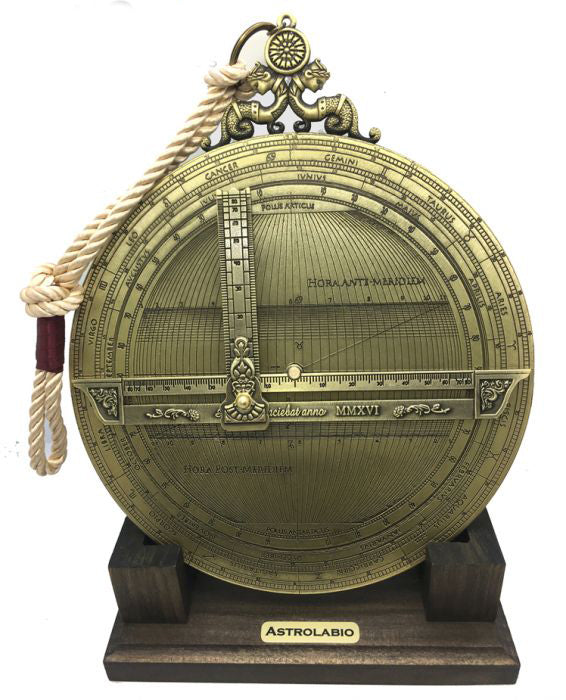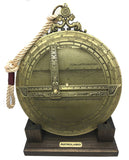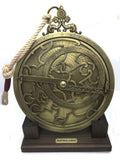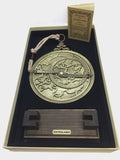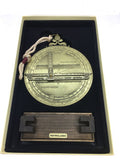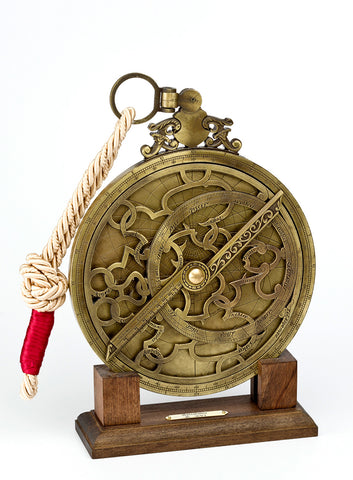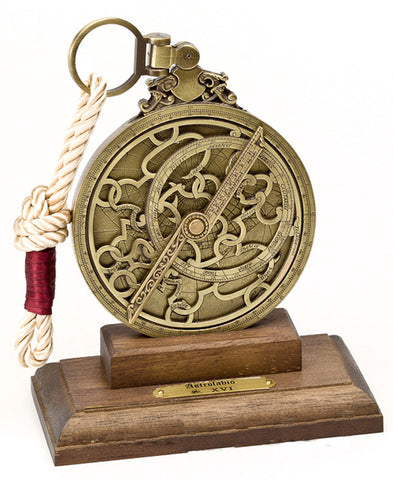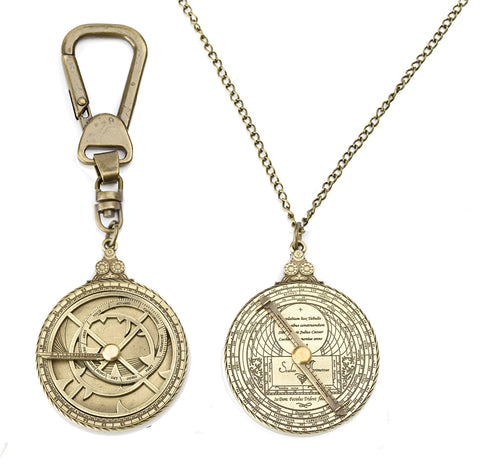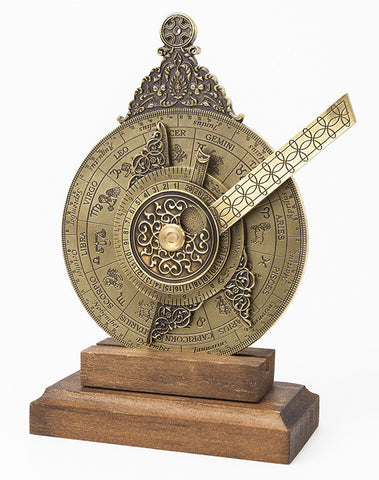In XVI and XVII centuries Louvain (Belgium) was the most important center of astronomers and astrolabe makers. Louvain had it all: Access to learned writings, raw materials and skilled labor. Two styles of universal astrolabes leapt in prominence from this environment, and Genma Frisius (1508-1555) was influential in the development of both. He was directly responsible for popularizing the stereographic universal astrolabe he called “Astrolabum Catholicum”, and was a teacher of Juan de Rojas y Sarmiento, who documented a form of universal astrolabe using the orthographic projection, which became known as the Rojas astrolabe.
An ordinary astrolabe requires a separate plate for each latitude, which makes it impractical to produce an instrument usable anywhere. Gemma designed an instrument with an ordinary astrolabe on one side and adopted a form of astrolabe that can be used at any latitude for the other side. This form makes a lot of sense, since different problems are better suited for one type of the astrolabe or the other.
The Ortographic astrolabe
Gemma Frisius´ work on the “Astrolabum Catholicum led directly to the investigation of using other projections methods for universal astrolsbes. An obvious projection to investigate was the orthographic projection. Juan de Rojas, who was a student of Gemma, combined of the relevant theories into a form of universal astrolabe using the orthographic projection.
Almost nothing is known about the life of Juan de Rojas, we can guess he was born 1520-1525 and he was the second son of the first Marques de Poza and it is said he was thought to be a potential bishop.
We do not know the exact dates Juan de Rojas spent in Louvain, but he was certainly there in 1544. Rojas returned to Spain soon after where he wrote his book on the orthographic astrolabe that was published in Paris in 1550. It is illustrated with 63 diagrams on the construction and use of the astrolabe described in the text . He seems to have abandoned scientific pursuits after publishing his book and to have gone into military service and he is said to have died on a journey to Thrace, but we do not know when or why he was there.

